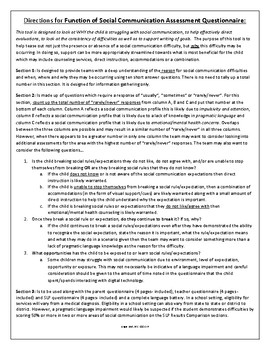Pragmatic Social Communication Data Tool - School Age
- Word Document File
What educators are saying
Description
I am SO EXCITED about this pragmatics assessment! Based on all the most recent research, this tool will add clarity to the difficulty that can happen with pragmatic assessments. The goal being - to determine WHY these difficulties are happening so that the appropriate type of support can be given (and that isn’t always direct speech therapy)!
This tool is designed to look at WHY the child is struggling with social communication, to help effectively direct evaluations, to look at the consistency of difficulties as well as to support writing of goals. The purpose of this tool is to help tease out not just the presence or absence of a social communication difficulty, but WHY this difficulty may be occurring. In doing so, support can be more appropriately streamlined towards what is most beneficial for the child which may include counseling services, direct instruction, accommodations or a combination.
Section 1: Is designed to provide teams with a deep understanding of the reason for social communication difficulties and when, where and why they may be occurring using ten short answer questions. There is no need to tally up a total number in this section. It is designed for information gathering only.
Section 2: Is made up of questions which require a response of “usually”, “sometimes” or “rarely/never”. For this section, count up the total number of “rarely/never” responses from column A, B and C and put that number at the bottom of each column. Column A reflects a social communication profile this is likely due to impulsivity and attention, column B reflects a social communication profile that is likely due to a lack of knowledge in pragmatic language and column C reflects a social communication profile that is likely due to emotional/mental health concerns. Overlaps between the three columns are possible and may result in a similar number of “rarely/never” in all three columns. However, when there appears to be a greater number in only one column the team may want to consider looking into additional assessments for the area with the highest number of “rarely/never” responses.
Section 3: Is to be used along with the parent questionnaire (4 pages- included), teacher questionnaire (4 pages -included) and SLP questionnaire (4 pages- included) and a complete language battery. In a school setting, eligibility for services will vary from a medical diagnosis. Eligibility in a school setting can also vary from state to state or district to district. However, a pragmatic language impairment would likely be suspected if the student demonstrates difficulties by scoring 50% or more in two or more areas of social communication on the SLP Results Comparison sections.





